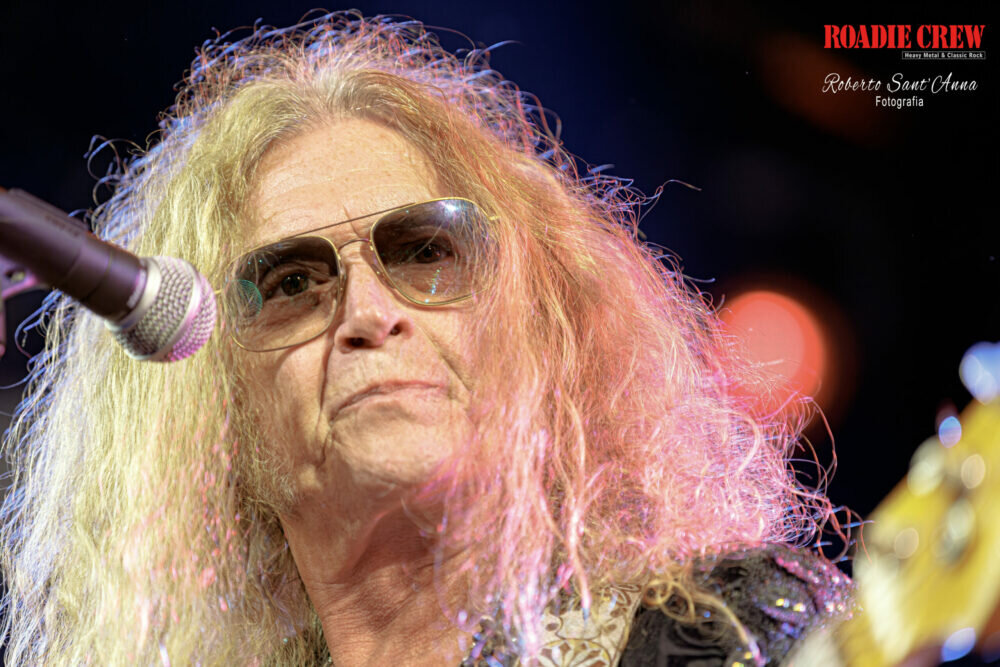

Former Deep Purple bassist Glenn Hughes has no interest in reuniting with his old bandmates on account of what he felt to be disrespectful behavior at their Rock & Roll Hall of Fame induction in 2016.
In a recent interview with Guitar Interactive, Hughes directed his attention toward Ian Gillan, Roger Glover and Ian Paice, the three longest-standing members of the band.
Hughes and singer David Coverdale joined Deep Purple and replaced Gillan and Glover, respectively, from 1973 to 1976, though they were also included in the 2016 induction.
“I will never speak to any of them again, simply because they were rude,” Hughes said of Gillan, Glover and Paice. “Both Roger, Ian and Gillan were rude to David [Coverdale] and I. Very, very hurtful. I didn’t give a fuck, actually, because I knew they were rude to begin with.
“I was the only sober man there. I don’t care about those guys. Gillan was rude to me on stage, accepting the award. I went to congratulate him. He looked at me in the eyes like I didn’t exist.
The guy has a problem with me, period. I’ll let him run with it. I feel bad for him. I’m really sorry about his wife [Gillan’s wife of 40 years died in 2022]. I’ve tried to reach out to him. He doesn’t want to know.”
Ian Gillan’s Perspective
Gillan has also spoken publicly about the 2016 induction specifically, emphasizing in a 2021 interview with Tales From the Road [via ultimateguitar.com] that “we were very kind to everybody,” and that “all of those [other comments] are just opportunistic remarks from the others.”
According to Hughes, the absence of connection between himself and Gillan is not for a lack of trying.
“I’ve tried to make some kind of friendship with him over the last 40 years,” he explained. “He doesn’t want to know. David Coverdale and I don’t exist to him. I wish him only the very best, but I have no time left for that behavior.”
Everything about Deep Purple’s 17th studio album was just wrong. With the recent retirement of founding organist Jon Lord still a raw wound (and despite the venerable Don Airey stepping in as his replacement), the band seemed to be sleepwalking through the motions, almost parodying a parody of themselves. The careless choice of title and album cover art only seemed to reinforce this perception.
The result of a somewhat mandated reconciliation with Ian Gillan after the poorly received “Deep Rainbow” experiment of ‘Slaves and Masters,’ ‘The Battle Rages On…’ holds the distinction of being Deep Purple’s unhappiest album.
Yes, sporadic flashes of inspiration emerged in the unironic title cut and the sweeping “Anya,” but by all accounts, in most every other respect this was a miserable experience for both the band and their fans.
You can’t really blame singer Joe Lynn Turner for rising to the bait cast by his former Rainbow boss Ritchie Blackmore and agreeing to join Deep Purple for 1990’s ‘Slaves and Masters.
‘ But the almost-universal groans that met this alliance were enough to drown out the solid, if unspectacular and suspiciously AOR-driven songs conjured up for this much-maligned LP. How could it possibly last?
Deep Purple’s first lineup (a.k.a. Mk. I) was seriously running out of steam on this eponymous third album. You can hear them grasping for direction amid the Summer of Love’s denouement, the as-yet unspecified concept of art rock, and the still-unclear rise of heavy metal.
Hence the Donovan cover, “Lalena,” and only mildly compelling originals like “Why Didn’t Rosemary” and “This Bird Has Flown.”
This musical summit between rock band and symphony orchestra is clearly the wild card in Deep Purple’s career discography, but that does nothing to diminish its fascinating accomplishments.
The experiment, led by the classically trained Jon Lord, wasn’t entirely successful or it wouldn’t have been a one-off. But it was certainly important enough to generate welcome press for the transitioning Deep Purple ahead of their heavy-rock rebirth.
‘Rapture of the Deep’ lacked bowl-you-over songwriting depth, but after the perplexing, embarrassing ‘Bananas,’ it proved that Deep Purple was still a band that took themselves seriously.
“Money Talks” carried itself with all due gravitas, while the bittersweet “Clearly Quite Absurd” was anything but, and “Kiss Tomorrow Goodbye” raged against the dying of the light.
‘InFinite’ illustrated that the comeback success of 2013’s ‘Now What?!’ was no fluke, reassembling the same team (right down to producer Bob Ezrin, who’d basically become a member of the band) to achieve similar, if slightly less consistent successes. “Time for Bedlam,” in particular, recalled their glory years.
Its hard to see the overnight success of Deep Purple’s first LP, ‘Shades of…’ as anything but a fluke, just like its undeniably catchy but hardly life-changing smash hit cover of Joe South’s ‘Hush.’
However, the formidable instrumental prowess and budding songwriting of Ritchie Blackmore, Jon Lord, et al was already evident in standout moments like the grooving “And Her Name Was” and the aggressive instrumental “Mandrake Root.”
Though it lacked the consistent rewards of 1995’s bounce-back ‘Purpendicular,’ 1998’s ‘Abandon’ helped prove that Deep Purple’s second, post-Blackmore incarnation was here to stay.
And proof was such standout tunes as the spelling-challenged “Any Fule Kno Dat,” moody “Seventh Heaven,” melancholy “Fingers to the Bone,” and very fiery “Evil Louie,” where the band’s pleasure in each other’s company was made evident by their tight performance.

Leave a Reply